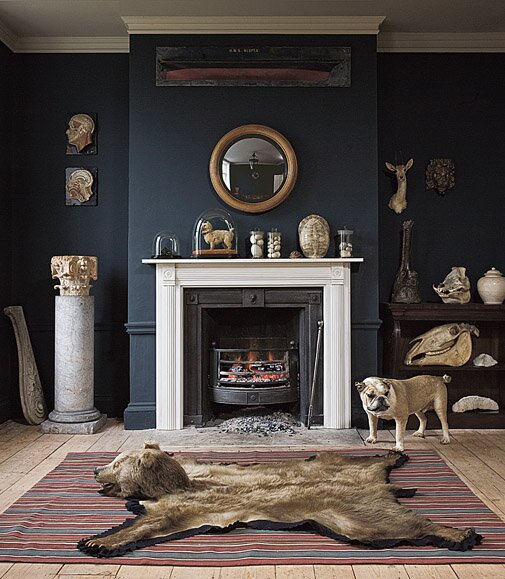Fire Grates & Accessories

When the earliest chimneys were constructed, the hearth was provided with andirons, sometimes called dogs, to support the wood. Basket grates were only introduced during the Tudor period when coal was first used. By the early 18th century, the free standing basket was backed by a cast iron fire plate, or fireback, which rested on wrought iron struts, with sides of cast iron and a grid through which loose ash fell. This was to oxygenate the fire and improve burning. Decoration was confined to the front, and was composed of three fire bars and a fretted apron with cheeks ending in ornamental legs. In the 18th century, these were called stove grates, and various metals were used to construct them including steel for the front fire bars, apron, legs and ornamental embellishments, while finials, of brightly polished steel or brass, were often engraved.
From around 1750 the design of these ornamental embellishments became increasingly elaborate, often embodying Gothic, Rococo and Chinoiserie styles following the prevailing taste of the times. Following the introduction of basket grates, the size of chimneypiece openings were reduced to concentrate the updraft, however if this proved too strong, vast quantities of expensive coal were consumed with the heat going up the chimney. Conversely, if it was too weak, smoke would billow into the room. An attempt was made to rectify this by enclosing and framing the grate with steel or brass slips which filled the whole opening. These register grates regulated the updraft to solve the problem.
All our fire grates are designed to burn wood or coal and can easily be adapted to work with gas. They are hand engraved, using traditional methods and based on the finest antique originals. The collection includes register grates, baskets and andirons in brass and steel, specifically made to compliment our chimneypieces.
The image above shows the Longbourn chimneypiece in statuary marble with the Cleveland register grate and a Rossmore fire iron.